Some posts on this site contain affiliate links. If you book or buy something through these links, I earn a small commission (at no extra cost to you). Take a look at my privacy policy for more information.
This post initially started life as a lighthearted “top ten” style list of what to eat in Galicia. Somehow, though, it’s escalated into a full-scale guide to Galician food. If it gets any longer I’ll have to publish it as an eBook!
When I explored this region of Northern Spain, I fell in love with Galician cuisine. From simple pulpo a la feira to the numerous local desserts, there was just so much to try.
With the help of several locals, I’ve created a very long list of Galicia’s must-try dishes. So – this is my guide to the gastronomy of Galicia. Enjoy!
Traditional Galician Food
The region of Galicia in northwestern Spain is famed for producing some of the best food and ingredients in the entire country. There’s almost 1,500km of coastline, so seafood plays a big role in the Galician food.
Galicia also enjoys more rainfall than the south of the country, so the interior of the region is incredibly fertile. This means lots of farmland, as well as plenty of room for raising dairy cows and planting vineyards.
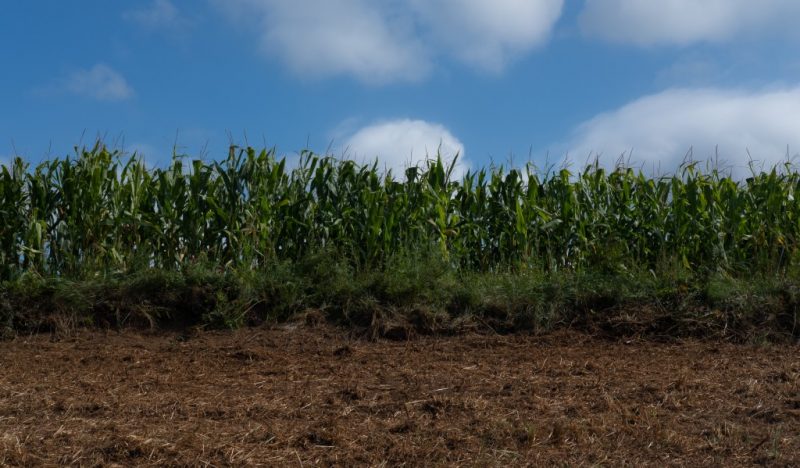
Food tends to be simple and hearty. Potatoes, wheat, dairy, and meat products all feature prominently, and a lot of the most traditional Galician food have a very rustic feel. While Galician desserts that tend to be more creative – but that’s still to come. First, here are some of the more traditional Galician dishes to try…
Lacón con Grelos
Lacón con grelos (pork shoulder with greens) is the perfect representative of Galician food. This hearty meal consists of salted pork shoulder or leg, as well as chorizo and vegetables. Grelos are turnip tops. These are very common vegetables in Galicia and have a distinctive, bitter taste.
Empanadas
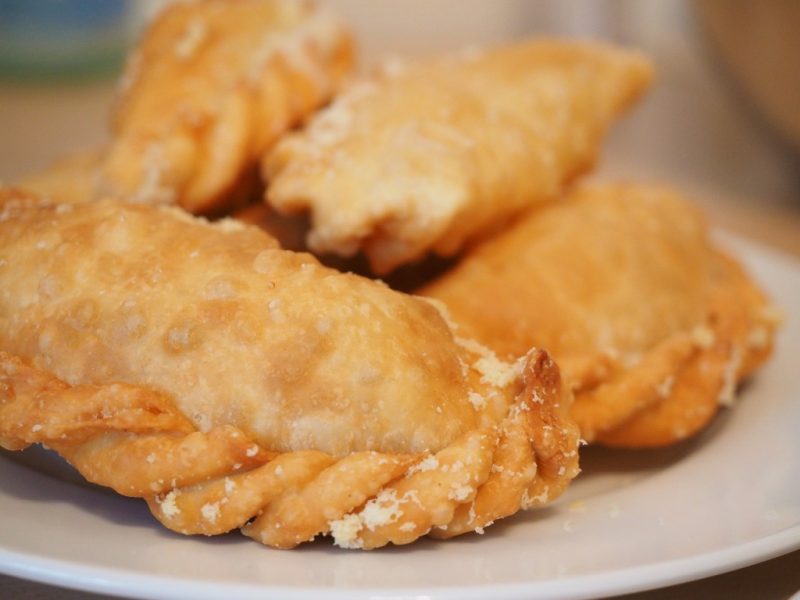
Although they are more commonly associated with Latin American cuisine, empanadas actually originated in Galicia and Portugal. Typically, a Galician empanada will be bigger and flatter than the ones you find in Argentina. These filling meat pies come with a variety of fillings, but the most popular is probably empanada de atún – tuna pie).
Caldo Gallego
Simply called caldo in Galicia, Caldo Gallego (Galician broth) is a hearty soup dish that’s packed with vegetables. Potatoes are boiled with fat white beans, as well as greens including grelos, cabbage, or collard greens. The key ingredient is unto, a kind of lard made from dried pork belly. Sometimes chorizo, ham or other cuts of pork are added too.
Pimientos de Padrón
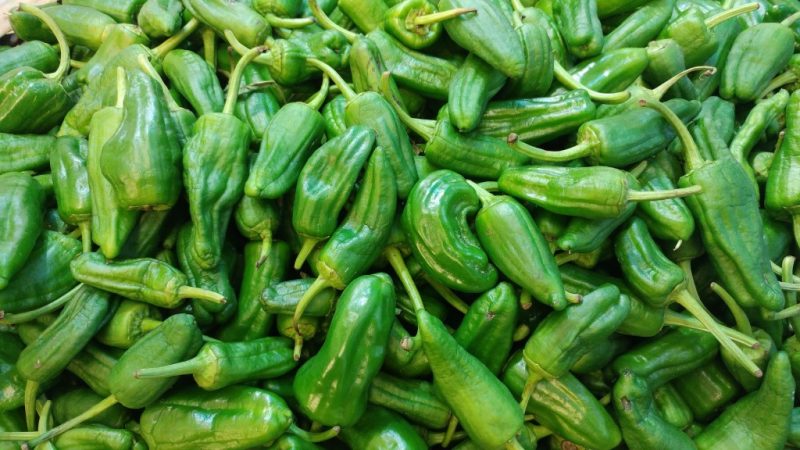
These small green peppers can be found all over Spain, but they’re actually from Herbón in the Galician province of Padrón. They arrived in the region via settlers from Mexico, but now they are so important to Galicia that there’s an annual festival for them.
Padrón peppers are usually fried over high heat until the skins blister and are slightly blackened. Eating a plateful of these little green chillies has an element of Russian Roulette to it. While most of them are mild, around 10% are super-spicy, and there’s no way to tell without tasting them.
Where to buy: Pick up a jar of spicy pepper marmalade from A Pementeira’s stall in Santiago market- I love it.
Galician Cheese
Dairy cows are much more common northern Spain than in the south. Which means Galicia produces some great cheeses. Most famous and widespread is Tetilla, a mild yellow cheese known for its buttery taste. The name comes from a slang term for breast, because of the cheese’s shape. Also look out for Arzúa Ulloa, a soft, pale cheese which is similar in taste to tetilla, and San Simón da Costa which is firmer and smokier.
Galician Seafood
Galicia is a coastal region, so it’s big on seafood. Seafood here is plentiful and cheap, and is considered to be some of the best in Spain. Most traditional dishes are prepared very simply, with just a few ingredients and spices. Often, the fish or shellfish is simply boiled or steamed and served with lemon. The emphasis is always on the seafood itself.
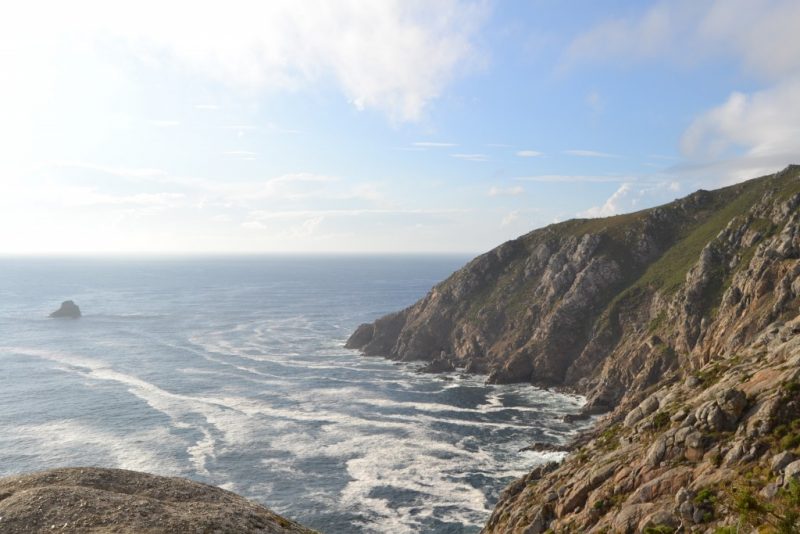
This section is dedicated to the most unmissable Galician seafood dishes. But, bear in mind that there are loads more to try besides these. So be adventurous and explore the markets and menus around the region to discover some amazing dishes.
Pulpo a la Feira
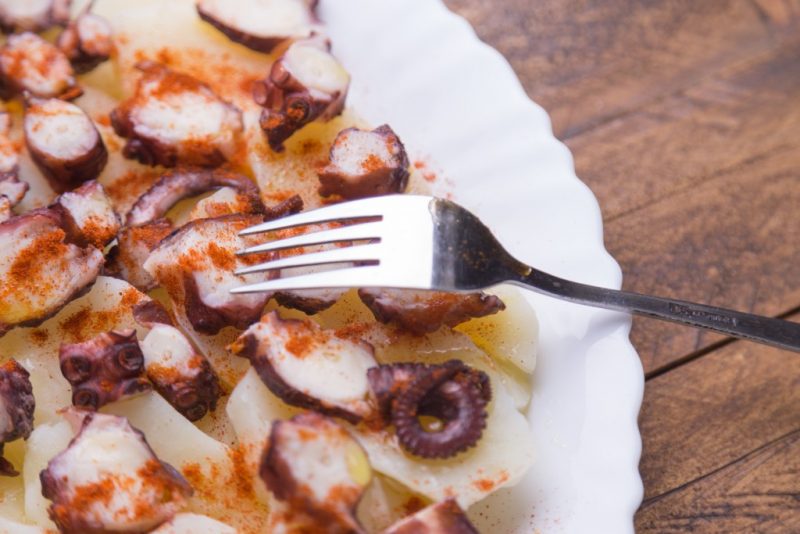
Common octopus thrive in the colder waters of Northern Spain’s coast, so they’re one of the most common seafood. Galicia has a unique way of preparing octopus, which is probably the most famous traditional Galician food.
The octopus is boiled in a copper pot, chopped into medallions, and served with olive oil, paprika, and salt. This iconic Galician dish is known as pulpo a la feira, or polbo á feira in Galician. The name translates to “fair-style octopus”. This is because the dish is commonly served at fairs and festivals, and always on a wooden plate. It’s such an iconic dish that it’s often called pulpo a la gallega, or Galician octopus.
Where to buy: Grab a wooden plateful of pulpo a la feira at the market in Santiago. An authentic Spanish takeaway lunch!
Hake
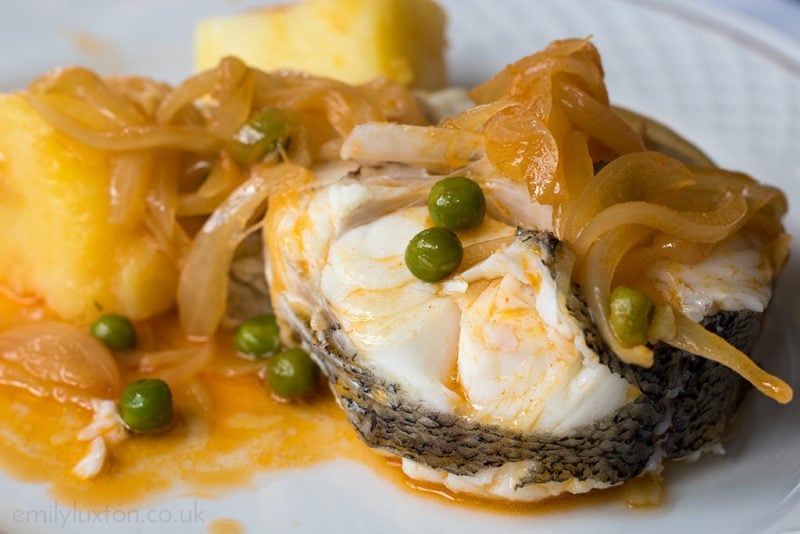
Perhaps the most popular fish in Northern Spain, hake (or merluza in Spanish) can be found all over Galicia. This is a lean, white fish with a low-fat content – which is handy because it’s usually served up in huge portions. The most traditional dish is merluza a la gallega. This is simply hake boiled with potatoes and served in a sauce made from garlic and pepper. It’s simple – but very tasty.
Galician Lobster
Also known as bogavante, Galician lobster is blueish in colour (when it’s alive) and is extremely tender and meaty. Look for bogavante con arroz as this is one of the most traditional Galician seafood dishes. It’s pricey by Galician standards, but very worth it!
Scallops
Also prolific in Northern Spain are scallops (vieiras). They are so common in this region, that their distinctive shells are used as the symbol of the Camino de Santiago. In Galicia, scallops tend to be served one of two ways. You can have them steamed, plain, and served in a half-shell with a little lemon. Or you can try vieiras gratinadas, which are served with a lightly spiced breadcrumb topping.
Barnacles
These unappetising looking critters are apparently a very popular Galician food. Percebes, or goose-neck barnacles, are prepared in a simple way. They are boiled with salt and lorel leaf for around thirty minutes.
When I asked if they were nice, my guide Patricia confessed: “I don’t like them!”. But local girl Ana told me she absolutely loves them, as do most Galicians. Give them a whirl if you really want to eat like a local in Galicia.
Oysters
A delicacy worldwide, oysters in Galicia can be surprisingly cheap. Find ostras in markets to get the best prices. And wash them down with a glass of the local white wine, Albariño!
For the best oysters in Galicia, head to Vigo. Oyster Street in the Mercado a Pedra (stone market) is lined with vendors.
Mariscada
If you want to try lots of Galician seafood at once, order a mariscada. These are huge seafood platters! They tend to be a little pricey, but they’re a great way to experience a lot of things in one go.
Galician Desserts
Dessert in Galicia is all about almonds, because Pilgrims following the Camino de Santiago brought the nuts with them centuries ago. As a result, almond-based desserts have become a regional staple. The most famous is the Tarta de Santiago, but there are plenty of others as well.
Many towns and cities have a signature dessert which is only found there, so ask around as you travel and see if you can uncover some secrets. Here are a few traditional desserts to try in Galicia…
Tarta de Santiago
Santiago Cake, or the Tarta de Santiago, dates back to the Middle Ages. Today, it can be found in bakeries all over Santiago de Compostela. As a result, the cake has become a symbol of the Camino de Santiago. It is frequently eaten by pilgrims upon reaching the end of their journey.
The recipe is simple and very sweet. Ground almonds, combined with egg and sugar, are baked into a tart about an inch deep. The cake is decorated with the cross of St James by sprinkling powdered sugar over a stencil. Be careful where you buy yours, though. Many of the cheaper ones are made using more flour than ground almonds, so the taste isn’t as good.
Where to Buy: According to a local I asked, the best Santiago Cake can be found at Mercedes Mora. Alternatively, you can pick one up from the Benedictine nuns at nearby San Pelayo de Antealtares monastery, not far from the cathedral.
Caprichos
There are three traditional Galician desserts in Santiago; all of them featuring almond. Caprichos are small biscuits made from toasted almonds, eggs, and sugar. Like Santiago Cake, they’re a traditional snack for pilgrims reaching the end of the Camino de Santiago. Caiprichos can be found at bakeries all over the city, so head to Rúa do Franco or Rúa Nova to find one.
Pedras
The third traditional dessert in Santiago is pedras, meaning stones. These are simply chocolate-covered almonds. Tenda da Caldeirería is a boutique supermarket specialising in local goods, so this is a great place to buy them.
Tarta de Mondoñedo
A sweet puff pastry pie, Mondoñedo cake is only found in the town of Mondoñedo. The pie is stuffed with two layers; ground almonds on top of a stuffing made from candied spaghetti squash or pumpkin.
Where to Buy: I can personally recommend the Mondoñedo cake at Restaurante Montero.
Galician Drinks
Albariño
Spain may be best known for its reds, but Galicia’s most famous wine is white. Albariño is made with the indigenous Albariño grape, grown in the Rias Baixas, a series of four Atlantic inlets south of Santiago de Compostela. The wine is fruity and incredibly light and accompanies the seafood tremendously.
Nordés Gin
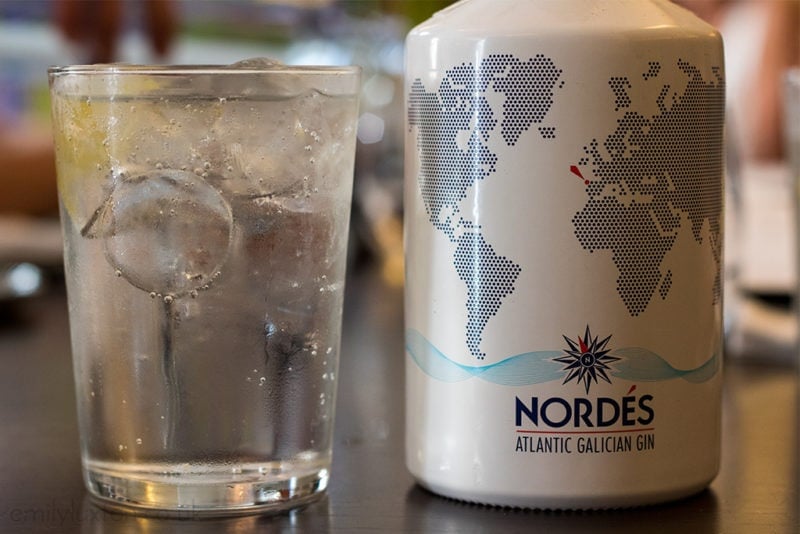
One of my favourite discoveries in Galicia was Nordés Gin. A relatively new gin, Nordés is made from an Albariño-grape-based spirit, making this a very Galician drink. Botanicals include lemon peel and hibiscus, and the resulting flavour is sweet and floral. It’s a light, summery, gin which would be perfect for cocktails.
Orujo
Across Northern Spain, the local aguardiente (fire-water) is a pomace brandy known as orujo. It’s similar to grappa and probably originated in Cantabria, but Galician orujo tends to be better known. Many Galician families have their own secret recipe, and there are also several commercial producers in the region.
Queimada
Galicia has strong Celtic roots which are still visible in many of the region’s customs and festivals. A good example is the Galician drink of queimada, which is a fiery punch. Orujo is mixed with coffee beans, cinnamon, sugar, and lemon zest whilst a spell is recited to ward off evil spirits, and then the drink is set on fire. This traditional ritual is considered a vital part of Galician identity.
Galicia Food Tours
If you want to learn more about Galician food, a food tour or wine tasting is a great place to start. You’ll get to eat and learn a lot, but also have a chance to meet new people and have lots of fun! So I’ve listed some amazing food tours from my chosen partners. These are affiliate links so I might make a commission if you book anything:
- Santiago Gastronomic Day Tour (from £54.74pp)
- Rias Baixas Tour from Santiago de Compostela (from £41.06pp)
- Santiago Gastronomic Night Tour (from £63.86pp)
- Guided Tour to Rias Baixas Wines in Cambados (from £35.58pp)
- Granbazán Winery: Guided Tour and Wine Tasting (from £10.95)
So, that concludes my guide to Galician food. If I’ve missed anything, or you have your own great tip, scroll down to leave a comment!
My visit to Galicia was as part of a press trip organised by The Travel Mob on behalf of El Camino Santiago and Turismo Galicia for the #InGreenSpain and #VisitSpain campaigns. As always, all views and opinions (except quotes) are entirely my own and without bias.
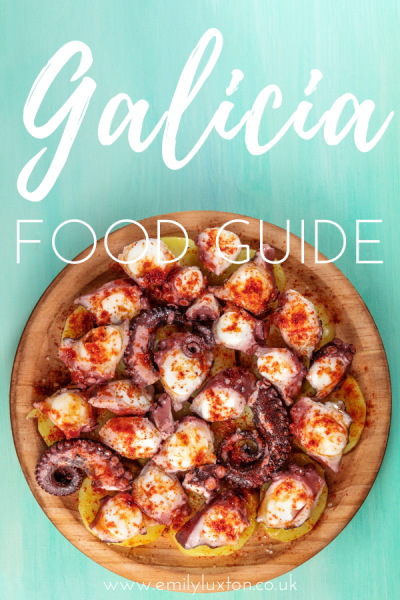

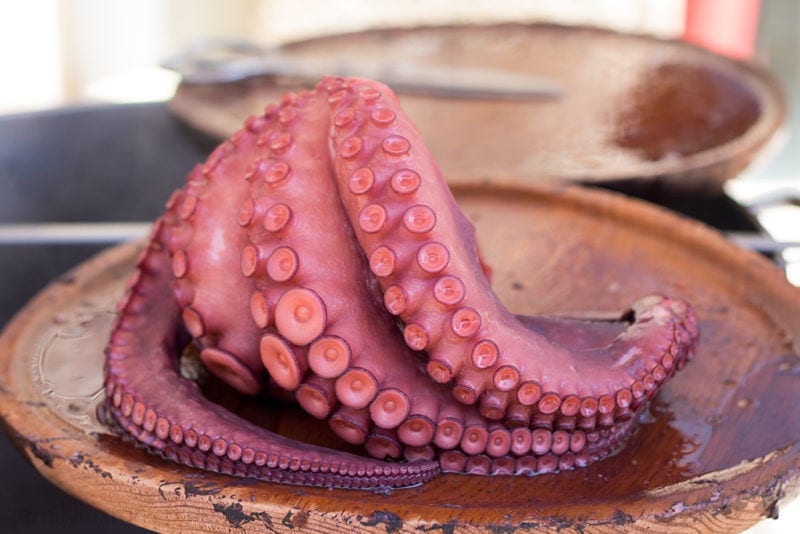
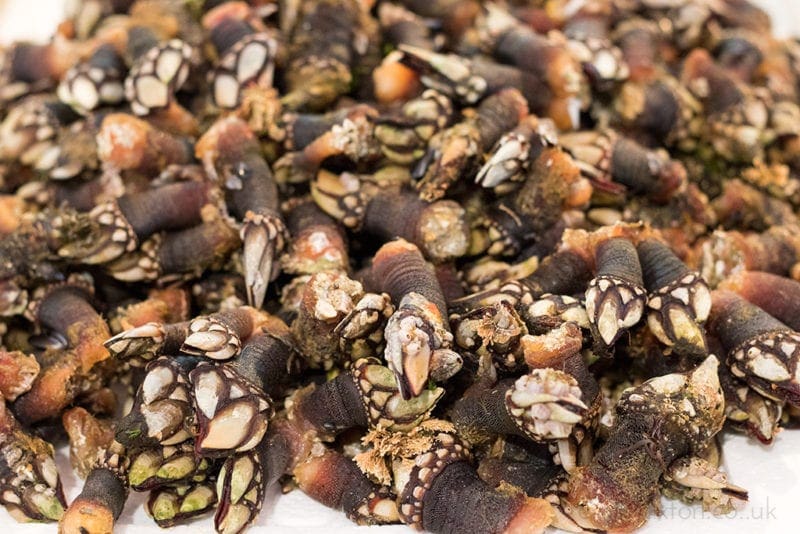
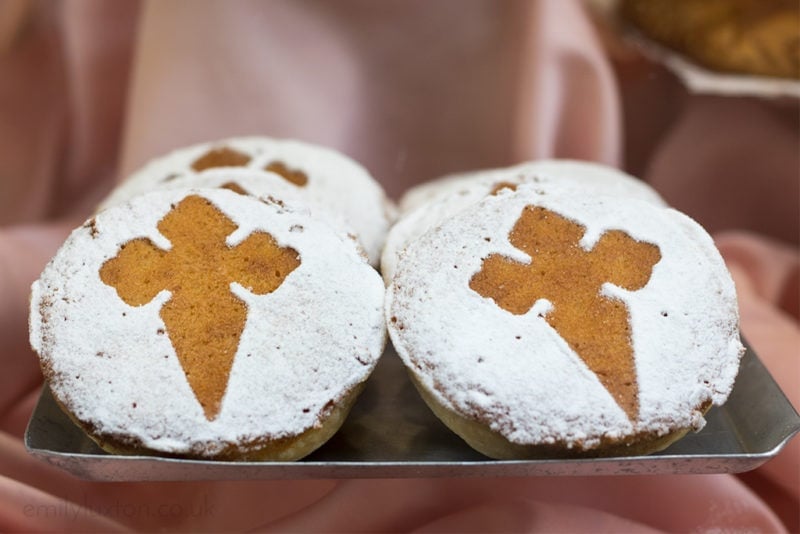
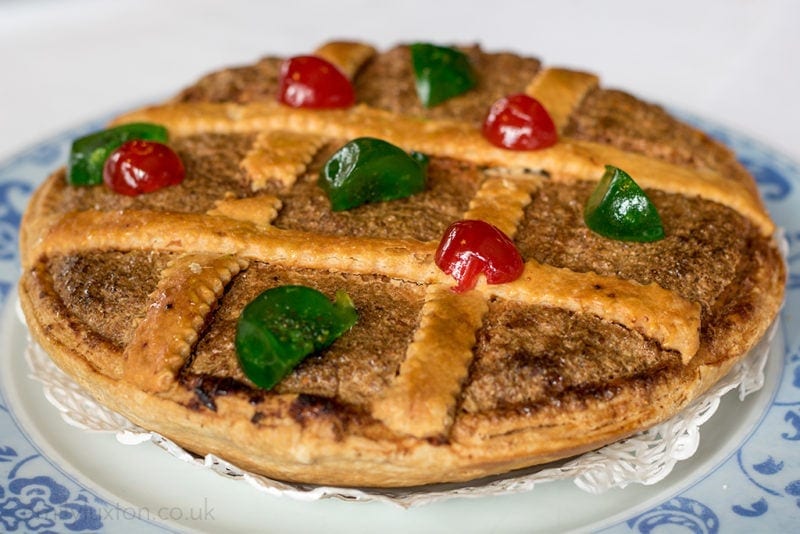

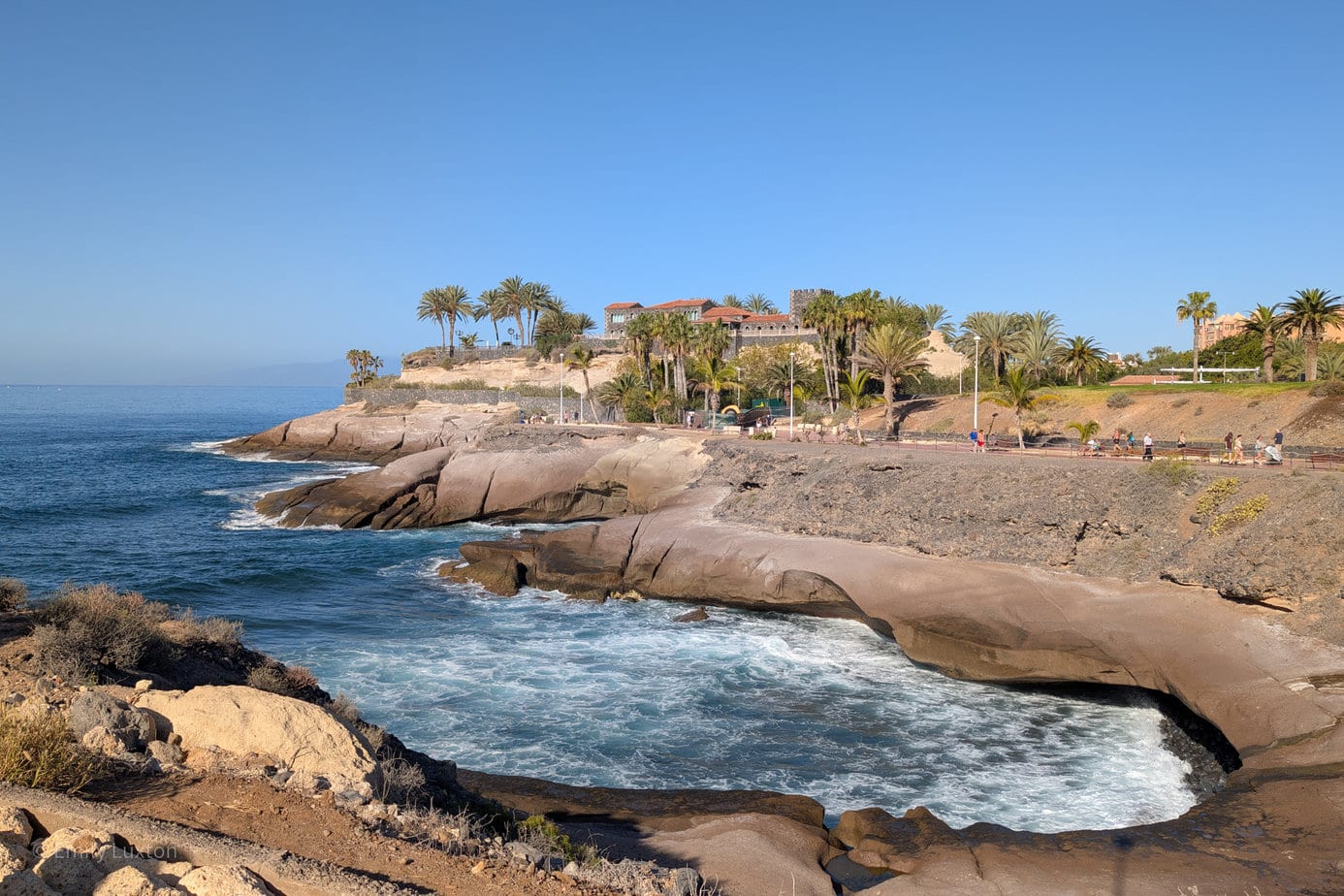
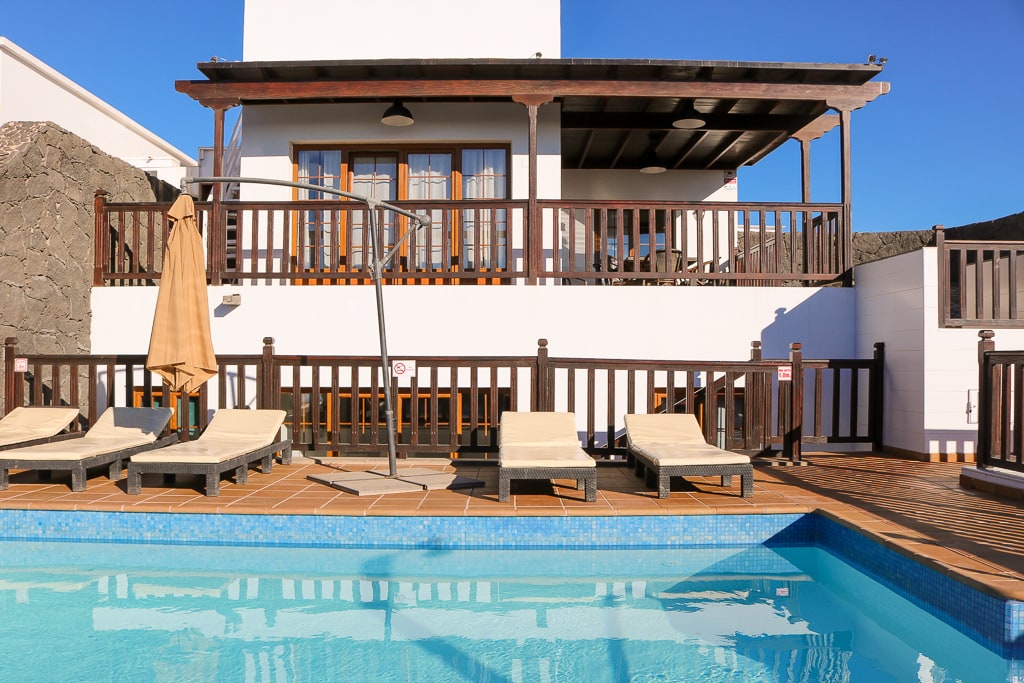
Great post, Emily – hope to be heading down to Galicia soon and I may well be working my way through your list. Might skip the barnacles, though!
Haha I couldn’t quite face them either!!! But don’t miss the local cakes – and if you find any more let me know. It would be great to add them to the list!
I’m Galician and I must say I am really impressed with your description of our food! I will be showing this to all my British friends when they visit :-)
Thanks so much!! I asked a few locals and put in a lot of research – wanted to really show off the best of the food as I really fell for it when I visited!
I am a Galician living in the UK , this guide is great, thanks :) I will show it to my friends. xx
Thank you! So good to have the approval of a Galician :D
I agree my Galician fellow´s opininon about your really accurate research, though time to cook barnacles is just some minutes, instead 30 min.
The best way is to throw them in the boiling water, and retire the pot from fire just when it begins to boil again. The barnacles will be ready.
Very important: keep them hot/warm on the table by means of covering them with a clean folded napkin.
And this is a fine footage about barnacle collectors and their very risky job. https://www.youtube.com/watch?v=iCWrjt8hCZk
Thanks so much for the input!! I’ll have to try this some time :)
Soy gallego. Faltan dos comidas muy importantes e no Galicia,son: Cocido gallego( con oreja, costilla, morro y pezuña desalados y de cerdo), chorizo, ternera, repollo, patatas y habas.
Excellent entry!!! I cited you on Everipedia’s entry for Galician cuisine
Oh wow, thanks Nick :) I worked really hard on this post! Dead proud of my food pics too!! Can you send me the link of where you’ve featured me?
I have just got home from galicia after doing the camino..every day on the pilgrim’s menu there was roxo,a meat and chips combination.Is it Galacian? I cannot find the recipe
Charmaine xuereb
First of all – congrats on doing the camino, how was it? :D
Secondly, I’ve not heard of Roxo but it could be slang maybe for a dish with another name? I have a Galician friend so I’ll ask her for you!
Hi Charmaine,
It’s called Raxo and it’s pork marinated in paprika. The name certainly is Galician (hence the X) but I am unsure of its origin.
Ahhh thanks for the tip Charlie :)
Caldeirada de pescado ( merluza, bacalao…)
Pescado cocido con pimiento, cebolla patatas,repollo o coliflory se le añade una salsa a base de pimentón dulce, aceite, cebolla y ajo( hay que freír la)
Gracias por estas recomendaciones Ignacio :) Necesito regresar a Galicia y probar estos platos!
muy buen artìculo
desearìa visitar la tierra de mis ancestros para degustar el mayor nùmero posible de mariscos
es posible en julio ?
agradecido
gregorio fraga
Hola Gregorio! Gracias por su comentario. Pienso que Galicia es bueno todo el ano – incluido junio :)
Disfruta tu viaje :)